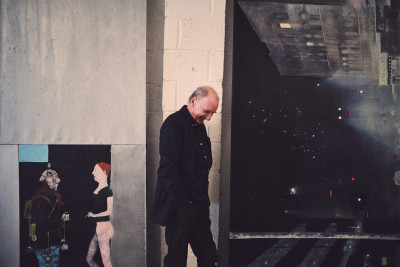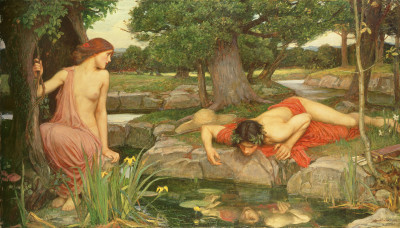Phyllida Barlow at Tate Britain
Phyllida Barlow at Tate Britain
"Gravity is sculpture’s other material"
By Tara Contractor
Published 4 April 2014
Phyllida Barlow RA has unleashed seven playful giants into Tate Britain’s Duveen Galleries.
-
These are the sculptures in dock, her largest and most ambitious work to date, and follow Barlow’s celebrated commission for the Academy’s Annenberg Courtyard in 2006.
Constructed from materials such as plywood and polystyrene, the sculptures contrast with the galleries’ formality – crushedtower, a rumpled column of cardboard wrapped in stripes of bright tape, feels like a parody of the galleries’ sombre ionic columns. It is no surprise that Barlow explains to me that the spaces’ formality was among the aspects of the project she most enjoyed.
Barlow refers to gravity as “sculpture’s other material” and this is an idea she plays with in dock. Sculpture is traditionally earth-bound, but dock fills the galleries’ height with soaring forms that viewers encounter from below. The work is particularly exciting, however, because it appears to teeter on the verge of collapse. It is hard to walk beneath the sculptures without searching for clues as to how they stay upright.
-

Phyllida Barlow: dock 2014

Phyllida Barlow: dock 2014
-
Reusing materials salvaged from her past sculptures, dock also evokes a cycle of decay and repair. The crate-like forms in 5hungblocks appear patched and stapled, while another sculpture appears to have crashed to the ground. The work’s makeshift look gives it a spontaneous, unfinished quality that Barlow describes as “a sense of not having yet arrived”.
Asked about dock’s connection to Tate’s riverside location, Barlow recalls how a moment spent watching boats on the Thames shifted the direction of the work. “It was a very full tide so the traffic on the river was very high up. I realised that something of the suspended forms that I was looking for was being performed along the river.” Today, dock makes a fitting title for structures recalling cargo ships and battered piers, not to mention the debris accrued in urban rivers.
While it would be possible to read an environmental message into dock, the work is more Dr Seuss than eco-apocalypse. In fact, walking through dock is a bit like walking through a magnificent landscape of children’s blocks and pick-up sticks. Innovative, immersive and above all fun, dock is a must-see show.
Tate Britain Commission 2014: Phyllida Barlow is at Tate Britain until 19 October 2014.
Tara Contractor is a contributor to RA Magazine.





